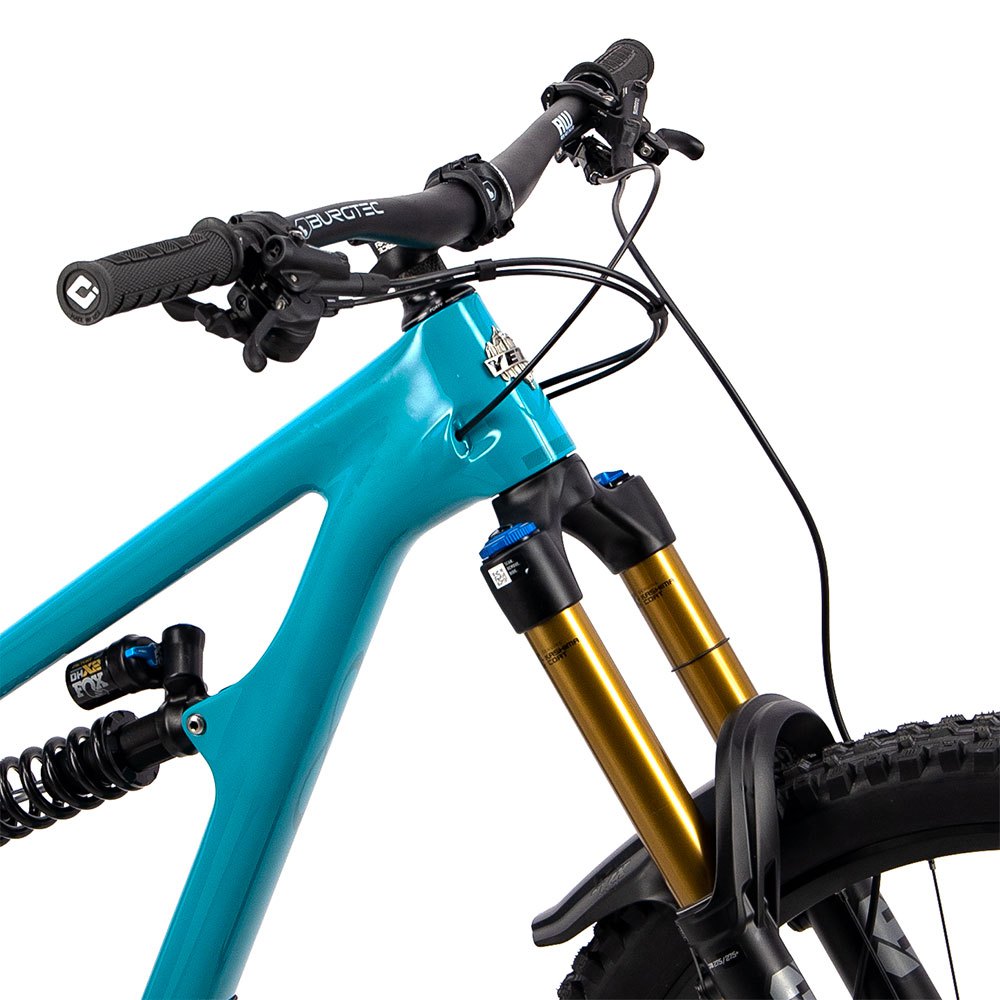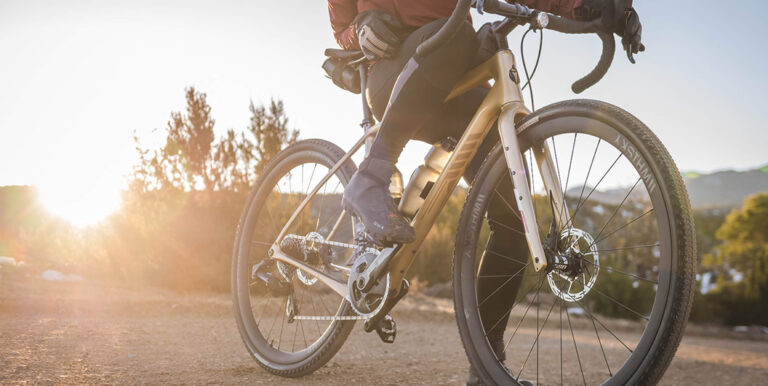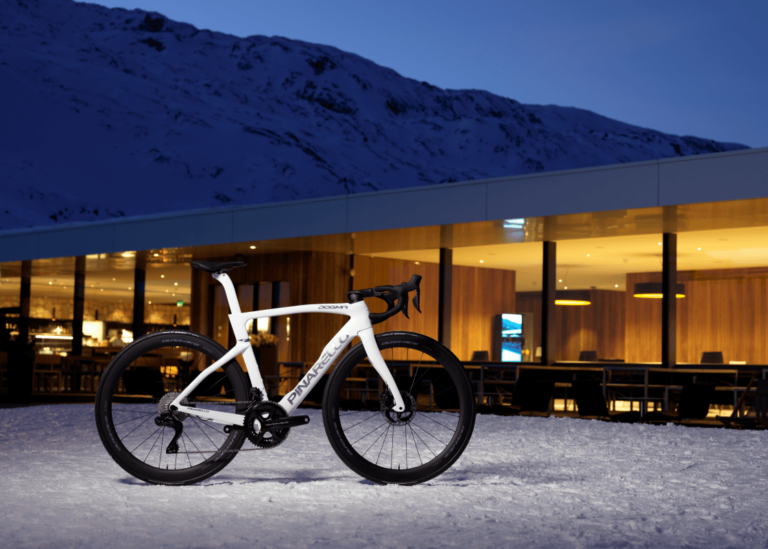Choosing the Right Frame Material for Trail Bikes

Key Point Summary of Choosing the Right Frame Material for Trail Bikes:
- Carbon vs. Aluminum: Carbon is lighter and can be engineered for specific ride qualities but is more expensive. Aluminum is more affordable, durable, and has a slightly heavier build.
- Durability and Longevity: While carbon frames are strong, they can be susceptible to impact damage. Aluminum may dent but is generally more resilient to superficial damage.
- Ride Quality: Carbon frames can offer a smoother ride by absorbing trail chatter, whereas aluminum frames provide a more connected feel to the trail.
- Cost Consideration: Carbon bikes are a significant investment. Aluminum frames offer great performance at a more accessible price point.
As someone who’s spent a good chunk of their life pedaling across various terrains on mountain bikes, gravel bikes, and cyclocross bikes, I’ve learned a thing or two about what makes a bike tick. More importantly, I’ve understood that the heart of any good trail bike is its frame material.
This choice can influence not just your ride quality but also how you connect with the trail. Here’s a breakdown to help my fellow cyclists, especially those just starting out or with mid-level experience, navigate the choice between carbon and aluminum frames. Now, let’s dive a little deeper.
Carbon Frames: The Premium Choice
My first encounter with a carbon fiber bike was somewhat of a revelation. The lightness was immediately noticeable, not just on climbs but in how swiftly it responded to every pedal stroke. Carbon frames are crafted using layers of carbon fiber sheets, bonded together with resin, a process that allows for intricate shaping and stiffness to be precisely controlled.
This means that engineers can design areas to flex for comfort while keeping other areas stiff for efficiency. However, the sophistication of carbon comes at a higher cost, both in terms of actual price and the need for careful handling. I recall a friend’s dismay upon discovering a crack in his carbon frame after a minor crash, a costly lesson in carbon’s vulnerability to sharp impacts.

Aluminum Frames: The Workhorse
Aluminum, on the other hand, has been my go-to for more adventurous endeavors where the trails get a bit gnarlier, and the likelihood of a bike taking a beating is higher. Aluminum alloys used in bike frames are both strong and light, though not as lightweight as carbon. They can endure the rigors of trail riding with less worry about catastrophic failure from impacts. Aluminum’s resilience was proven to me during a particularly rocky descent when my bike and I took a tumble. The bike came out with a few scratches and a small dent, but it was ride-ready, a testament to aluminum’s toughness.
The Feel of the Ride
Ride quality differs markedly between the two materials. Carbon has a unique ability to dampen trail buzz, offering a smoother ride over rough terrain. This can reduce fatigue over long rides, a quality I appreciated during endurance events. Aluminum, by contrast, provides a more direct connection to the trail. It’s a bit harsher but allows for precise feedback from the ground, which can be beneficial in technical sections where every bit of information from the tire contact point matters.

Making the Choice
Deciding between carbon and aluminum ultimately comes down to personal preference, riding style, and budget. For those looking to compete or who value the ultimate in technology and performance, carbon is the way to go. It offers weight savings that can make a significant difference in climbing and acceleration. For riders who prioritize durability, and ease of repair, and are perhaps a bit more budget-conscious, aluminum offers a robust package that doesn’t break the bank.
In Conclusion
Whether you choose the high-tech sophistication of a carbon frame or the rugged reliability of aluminum, the best bike is the one that meets your needs, fits your budget, and most importantly, brings joy to your rides. As you gain experience and refine your preferences, you may find yourself drawn to one material over the other. But remember, it’s not just about the bike; it’s about the adventures it enables you to embark on.
The best trail bikes for 2023 cover a wide range of designs, catering to various preferences and riding styles. From the detailed reviews and expert recommendations, a few standout models in the trail bike category have emerged, each known for their unique features and capabilities on the trail.

Santa Cruz is a dominant name this year, with several models making the top lists, including the Santa Cruz Hightower, Santa Cruz Tallboy, and Santa Cruz Nomad. These bikes are praised for their engineering, versatility, and durability, making them excellent choices for riders looking for a do-it-all trail bike that combines stability with playfulness.
Other notable mentions include the Norco Optic C3, Specialized Stumpjumper EVO Comp Alloy, and the Propain Hugene CF Performance, each bringing something unique to the table. The Norco Optic C3 is aimed at fun descents and is known for its corner- and jump-loving capabilities. The Specialized Stumpjumper EVO Comp Alloy is praised for its downhill and jump prowess, with adjustable geometry for tailored riding. The Propain Hugene offers great value with its carbon frame and customization options at no extra cost.
Additionally, models like the Yeti SB135, Giant Trance Advanced, Pace RC295 GX Ultimate, Nukeproof Reactor 275 Carbon RS, and Alchemy Arktos 135 have been recognized for their performance, versatility, and innovative designs that cater to both fun and competitive riding.
Each of these bikes has been carefully designed to offer a blend of efficiency on climbs and plushness for technical trails, ensuring a fun and rewarding experience on various terrains. The trail bikes of 2023 offer something for every rider, and the best is yet to come in 2024. This evolution suggests that the innovations and enhancements in trail bike technology are far from peaking, with future models promising even greater performance, versatility, and enjoyment for riders of all levels.

FAQ
What is the best frame material for a mountain bike?
For a mountain bike, carbon fiber is often considered the best frame material for those prioritizing high performance, due to its lightweight and customizable stiffness for varying trail conditions. However, aluminum provides a great balance of durability, cost-effectiveness, and performance, making it a solid choice for most riders.
What is the best frame material for a touring bike?
For a touring bike, steel is traditionally preferred because of its durability, repairability, and the comfortable ride it offers, especially important for long distances under heavy loads. Steel’s natural flexibility can absorb road vibrations, improving comfort during long tours.
What are the 4 main materials used for bike frames?
The four main materials used for bike frames include:
- Aluminum: Lightweight and stiff, ideal for a wide range of bikes.
- Carbon Fiber: High stiffness-to-weight ratio, customizable for performance characteristics.
- Steel (including Chromoly): Durable and offers a smooth ride, with Chromoly being a higher strength variant.
- Titanium: Combines the durability and smooth ride of steel with the lighter weight of aluminum, but is more expensive.
Is chromoly better than aluminum?
Comparing Chromoly and Aluminum, Chromoly steel offers a better strength-to-weight ratio and a smoother ride, which can be more comfortable over longer distances or rough terrain. Aluminum, while lighter and corrosion-resistant, typically provides a stiffer ride, which can translate to more efficient power transfer but less comfort. The choice between the two materials depends on the rider’s preferences, riding style, and priorities such as weight, comfort, durability, and cost.
Happy trails!
John





